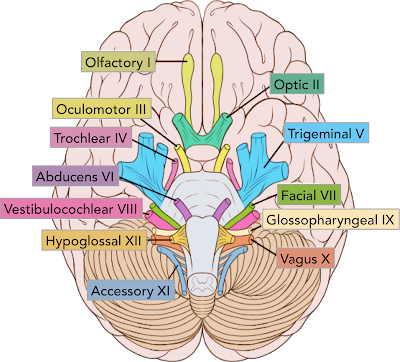Mitochondrial Replacement Therapy
Mitochondrial DNA (mtDNA) is a special type of genetic material present only in mitochondria. All other somatic and germline cells contain nuclear DNA which is inherited from both parents, whereas mtDNA is from the mother only - a much shorter piece of DNA consisting only of 37 genes, coding for 13 polypeptides that are essential for the oxidative phosphorylation metabolic pathway.
The mutation rate in mtDNA is 10x higher than for nuclear DNA because mtDNA is located near the sites of oxidative phosphorylation, therefore being exposed to reactive oxygen species released as a byproduct which can directly damage DNA, and since there are no repair mechanisms (such as ligases) present, the mutations can build up, causing mitochondrial disease that can be inherited by offspring. About 1 in 5000 individuals have a mitochondrial disease, with 1000-4000 children in the US being born with a mitochondrial disease per year.
Heteroplasmy vs Homoplasmy
Heteroplasmy --> When a cell has mitochondria that contain both mutated mtDNA and normal mtDNA that coexist together. The proportion of the mutant mtDNA determines the severity of the phenotypic expression of the disease.
Homeoplasmy --> Refers to when a cell contains mitochondria that either has completely normal mtDNA, or completely mutant mtDNA.
Heteroplasmy poses serious issues in terms of reproduction: mtDNA undergoes independent segregation at cell division which means after replication, there is a random assortment of the mtDNA into each of the daughter cells. It is unclear which daughter cell receives what proportion, if any, of mutant DNA. Since fertilisation is random, i.e. any sperm can fuse with any egg, it becomes challenging to families because the children may have considerable variation in their mtDNA through inheritance.
Solutions and Treatments
Prenatal/pre-implantation genetic screening can occur in order to select eggs with a low level of mtDNA mutations, however if the mother is completely heteroplasmic with mutations or is homoplasmic to a high-degree, methods include:
- Pronuclear Transfer: Involves the transfer of pronuclei (the haploid nuclei of germline cells, before they have fused) from one zygote to another. Firstly, a healthy donated egg (provided by the mitochondrial donor) is fertilised with the intending father's sperm. Simultaneously, the mother's affected egg cell is also fertilised with the father's sperm.
Both sets of fertilised eggs are allowed to develop into an early zygote stage, which makes the pronuclei visible. With micromanipulation equipment, the pronuclei formed in the donated egg is removed and discarded. Two pronuclei from the affected zygote are then implanted into the enucleated healthy zygotes, resulting in nuclear DNA from each of the intending parents and a donor's healthy mtDNA.
2. Metaphase II Spindle Transfer: Achieves the same result as PNT, but the transfer of parental nuclear DNA occurs before fertilisation. Fertilisation occurs after via an intracytoplasmic sperm injection.
Drawbacks
- Even with the steadiest hand, it is practically impossible to leave behind all the mutant mitochondria when enucleating. Even a relatively small amount of mutated mitochondria can cause symptoms.
- Mutated mitochondria may be able to proliferate at a faster rate, thus 'tipping the balance' and causing disease further down the line.
- Having mitochondria from two sources may disturb the normal relationship between the nucleus and mitochondria.
Ethical Issues
- As it involves the modification of the original germline, this technique is capable to affect future generations if the child is female.
- In regards to PNT, the transfer of pronuclei results in the destruction of the extra embryo which had the potential to develop into a healthy human being. This can be prevented however by using MST because here only egg cells are used.
- Donation of egg cells is a risky procedure due to the development of ovarian hyperstimulation syndrome.
- "Meddling with natural processes" - religious groups do not agree with most forms of genetic modification, even though these techniques significantly reduce infant mortality.
- Slippery slope that could eventually lead to "designer babies."
Social Issues
- Tripaternal aspect - children formed from this aspect may be subject to potential discrimination or legal complications.
- Mitochondrial replacement therapy in general is expensive and typically only benefit certain social groups only.
- Parents often do not find out they are carriers of these diseases until they have given birth to affected children, so these techniques are deemed unnecessary.
Mitochondrial Disorders
Aforementioned, the mitochondria are associated with the creation of ATP. Therefore mainly tissues with a high energy demand are affected, such as tissues present in the CNS, the heart and muscle. Mitochondrial disorders often include encephalopathy (brain disease), myopathy (muscle disease), ataxia (affecting coordination) and macular/retinal degeneration.
 |
| Different systems that may be affected in a mitochondrial disorder |
Mutations in nuclear DNA can also affect mitochondrial function through the translation of faulty mitochondrial proteins, causing diseases such as Friedreich's ataxia, in which you have a loss of sensation in the arms and legs, combined with impaired speech. These disorders are inherited like any other Mendelian disease compared to through maternal mtDNA inheritance, but exhibit similar symptoms to mtDNA disorders.
--------------------------------------------------------------------------------------------------------
Further Reading // Sources:





Comments
Post a Comment